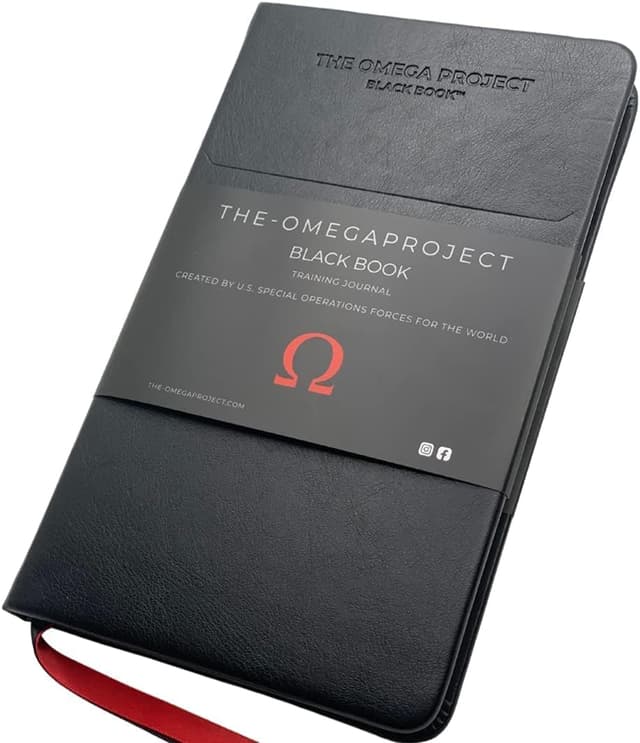Colin Nagy | July 13, 2023
The Analog Journal Edition
On writing, reflection, and optimization
Recommended Products

A journal designed for logging workouts, nutrition, sleep, and hydration, originally developed by a military team for effective physical journaling.
WITI Classifieds:
We are experimenting with running some weekly classifieds in WITI. If you’re interested in running an ad, you can purchase one through this form. If you have any questions, don’t hesitate to drop a line.
Every week Frontier Magazine shares a WITI-style essay about how design and creativity accelerate positive change. Sign up for new (and newly relevant!) ideas
Colin here. Ally Bruschi recently wrote a smart and impassioned WITI on her approach to journaling. The gist of her argument was searchability and accessibility to previous thoughts and insights were the most useful:
…there’s something to be said about having a corpus of yourself to come back to at regular intervals—and even mine for ideas—when you’re feeling stuck or lost. In those moments, there’s an element of self-reliant pride that comes from drawing inspiration from your own past.
More than just existing as a record, then, the HappyMappy has also become a vital tool for self-reflection, wherein I can scroll my way to deeper understanding of the patterns that tend to lead to my happiest moments, over and over again.
I largely agree with her, and find that information is only useful to me if it is easily accessible and not buried away in a long-lost notebook in a desk drawer. However, I’ve been experimenting with analog journaling of workouts and nutrition. The methodology was shared with me by a military friend of WITI that said his particular team was obsessive about putting pen to paper with how they sleep, train, eat, and hydrate. They have access to the best digital tools but found physical journaling to be the most effective. The active duty team developed their own journal and built a company (The Omega Project) based on the methodology.
I started the process and found it to be surprisingly useful. At first, it is a pain to write out and log the smallest workouts and smallest things. But the act creates some sort of tangible connection between mind and body.
Why is this interesting?
The offline element is the entire point. It was good to focus on completed workouts, logging sleep, and also committing food choices to a permanent record—something that is not always pleasant post-Domino’s indiscretion but catalyzes reflection.
I spoke to a high-level performance coach, Chad Fong, who shared his opinion that analog has particular benefits he has seen with his students and athletes:
“…putting pen to paper goes beyond the mere act of writing. It taps into the realm of embodied cognition, where the body and mind intertwine, influencing our thoughts, emotions, and memory.
Handwriting holds a unique power to enhance memory. When we write by hand, we engage multiple senses - the touch of the pen against paper, the sound of the strokes, and the visual feedback of the words forming on the page. This multisensory experience creates a richer cognitive imprint, facilitating deeper encoding of information.
Studies have shown that the physical act of handwriting activates different brain regions compared to typing. These brain areas are associated with memory formation and retrieval, suggesting a direct link between handwriting and memory enhancement. The deliberate and intentional movements required during handwriting stimulate neural connections, strengthening our ability to retain information.
Moreover, handwriting encourages a slower pace of writing, promoting reflection and deeper engagement with the content. The deliberate, mindful approach to forming letters and words enhances our focus and comprehension, fostering a more profound connection with the material being written..”
Most of my life and work are spent operating on computers, phones, and other digital interfaces, and I’ve found value in taking these particular elements offline, in association with Oura for tracking sleep (logged in the book) with workouts with data tracked via an Apple Watch. I’m always trying to refine and try new things and the analog addition has been one of the most material in recent memory. (CJN)
Thanks for reading,
Noah (NRB) & Colin (CJN)
Why is this interesting? is a daily email from Noah Brier & Colin Nagy (and friends!) about interesting things. If you’ve enjoyed this edition, please consider forwarding it to a friend. If you’re reading it for the first time, consider subscribing (it’s free!).


